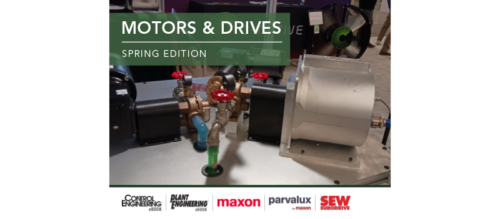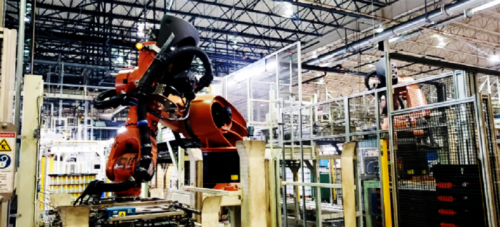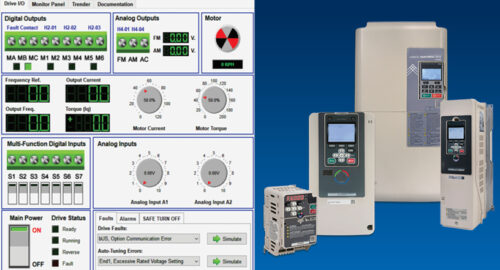Power quality from the inside out
At the 2006 Power Gen Show in Orlando in November, Plant Engineering convened a Roundtable discussion to talk about power quality issues and what manufacturers need to do to protect themselves against internal and external power disruptions. Panelists included Steve Wencis, the director of professional services, North America, for American Power Conversion; Jim Taufer, power management speciali...
At the 2006 Power Gen Show in Orlando in November, Plant Engineering convened a Roundtable discussion to talk about power quality issues and what manufacturers need to do to protect themselves against internal and external power disruptions. Panelists included Steve Wencis, the director of professional services, North America, for American Power Conversion; Jim Taufer, power management specialist for Square D; and Dr. Louis Scampavia of the Scripps Research Institute of Florida. The panel was moderated by Plant Engineering editor Bob Vavra.
The full text of the Roundtable is now available for download at www.plantengineering.com . In this excerpt from the Roundtable, which was sponsored by American Power Conversion, the panelists discussed external power quality challenges — from utilities and from Mother Nature:
Click here for wav file of event >>
VAVRA : What opportunities do companies have to push back on utilities? It doesn’t seem like a lot of occasions, but for some of the larger users, are there some things that you can address in those areas?
WENCIS : There used to be. I think with deregulation, that’s pretty much gone away. It used to be that if you were putting in, let’s say, a very large data center facility that was going to consume a lot of power that was going to be a lot of revenue for that particular utility. But now, where you can, in many cases, in many states, you can actually choose who you buy your power from, those opportunities are kind of going away.
VAVRA : I have heard of utilities using power management within a plant or a high-end user to try and drive additional capacity for the utility, and that’s one way that they’re going to look to work with manufacturers. But in terms of the power quality, it seems like a lot of manufacturers are left to their own devices.
WENCIS : I saw a presentation that actually talks about the fact that utilities are now saying they’re not even going to maintain their system. They’re going to wait until it breaks, and then fix it. So, if this is the mentality that’s out there with some of these utilities, you can imagine that they’re basically leaving it up to you to make sure that what happens within your plant accommodates your equipment.
VAVRA : And that’s just one kind of external power-quality issue. Louis, you can talk about the other kind of external power quality issue when there is no power. You were smack dab in the middle of a hurricane a year ago.
DR. SCAMPAVIA : As an end user of power, the quality is paramount in our research facility. This is because we run a high-frequency robotic screening center, and the robot is adjacent to a lot of other equipment: data collection equipment, very sensitive spectrometers — even the robot, which is based on servo motors, and servo motors can be a lot of harmonic feedback to the system. So we can’t have cross contamination.
So, internally, we create our own kind of issues, but also, externally, it’s a big issue, as well.
And getting back to (Hurricane) Wilma — essentially, we got our UPS installed literally three weeks before the hurricane came in. And we can’t afford any kind of down time in the robotic system, so it was really a blessing to have this UPS come on just as Wilma hits dead center through our county. And it provided us with enough battery backup power for the utilities to come in. And where we’re located, we were very fortunate in the sense that power was restored within six to eight hours.
Where I live, we didn’t get power back for another 10 days. But we can’t rely on just generator power alone. The generators will kick in many seconds after, or minutes after there’s a power loss. A simple glitch in the system can bring down an entire screening campaign for us. So, we have a spectrometer that uses a high-speed chopper that is spinning at a high RPM under a high vacuum. If that loses power for just a moment, we cannot reuse that instrument for another several hours. We have to wait for that chopper to come to a dead stop before we can fire that instrument.
We’re in the middle of a campaign. We’ve just crashed it. So when we’re running a campaign, it’s just extremely paramount that we have really high-quality power and continuous power.
VAVRA : What kind of research are you working on, and what’s the nature of the work that you’re doing.
DR. SCAMPAVIA : We’re in the drug discovery group, so this is our sort of mandate, is to take different diseases that are being studied by biomedical researchers, and to put them into a kind of a screening campaign that allows us to test different drug candidates against the disease to find, hopefully, a new therapeutic that can be developed into the future.
This is something that’s taken industry, in the past, many years to do. We’re using high-speed robotics to get the whole job done literally within a few months.
When we run a campaign, it’s kind of like launching a space shuttle. All the equipment and all the supplies have to be brought in and set up. These are cells that have to be grown to the capacity that we need could take days and weeks to happen. We have a short window where that cell culture has to be used, otherwise we’re crashing it.
We’re talking about a fair amount of money when we can screen one million different drug candidates. That gives us a lot of important data and a lot of useful information. But once we’re screening, once in that two-hour window, we can’t have any kind of failure on the robotic system.
And, essentially, just the materials alone, we run a campaign, we’re talking about a lot of money in disposable materials, not to mention all the labor that went into preparing all those materials and acquiring them.
So, there’s a lot of money invested in a particular campaign that might involve a million different drug compounds. So you could imagine that a UPS literally pays for itself if it just saves one campaign for us.
VAVRA : And that’s a high dollar value in a short period of time, but just about any manufacturer that you’re talking about today is dealing with those same kind of issues; that if they get a power surge or a power glitch from wherever it happened, internally or externally, it’s going to drive down your productivity. It’s going to take you off line. Besides making equipment to help manufacturers, you manufacture yourselves.
TAUFER : Right. We provide the solutions that actually help us internally, as well. So, when you’re looking at a facility and keeping power on and keeping your power quality acceptable, you have to also consider — one of the things that Louis mentioned is, are you hurting yourself, as well?
A lot of concerns with your power quality, your harmonics, your voltage variations can be self imposed. So you have to know, is the garbage coming from outside or inside? And then you have to identify, if it is coming from inside, how do I manage that problem?
And so we found that monitoring is usually the first step. And what you’d like to accomplish is to kind of have a health check with your power system; find out a baseline for power quality for your voltage variation, for transients, especially in Florida; and then come up with plans on how to address these problems with appropriate vendors, look at solutions, whether it be UPS solutions, filters, et cetera and then trend over time. Am I improving, or am I staying the same, or getting worse, so that you can really quantify how well these solutions are working?
VAVRA : Steve, what’s your strategy in dealing with those same kinds of issues? What are some of the things that you would look at, at a client level, and say, here’s some of the problems that we see, and here’s how we solve them?
WENCIS : Well, it really depends on the client’s particular allocation. I’ve been working mostly with data centers, which is a little bit different from maybe an industrial plant. But, you know, a lot of the things you want to be careful of is it going to be interaction between UPS and a generator. UPS has a lot of input filters on them that can react with a generator. On the other hand, if it doesn’t have an input filter, then it may be generating excessive harmonics on the bus, which that bus may be feeding motors and things like that, and the harmonic distortion could actually overheat motors.
So, you just have to take a real close look at the entire system and plan around all the different pieces, because it’s not just one component. It’s how everything’s interacting with each other.
Do you have experience and expertise with the topics mentioned in this content? You should consider contributing to our CFE Media editorial team and getting the recognition you and your company deserve. Click here to start this process.





